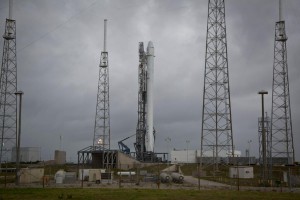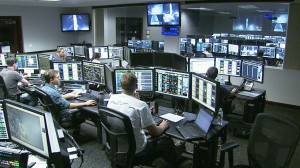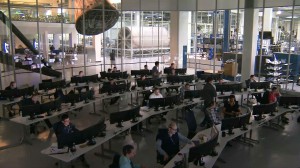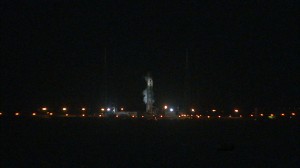
The propellant tanks of the Falcon 9 are made from aluminum-lithium alloy while the top and bottom domes of the tanks are aluminum. SpaceX named its rocket after the Millennium Falcon from Star Wars. For the true devotees out there, this Falcon 9, called v 1.1., is an upgraded version of the original. It has the stronger Merlin 1D engines and other updates to the first design.




 Refined kerosene and liquid oxygen have been pumped into the tanks of the Falcon 9 this morning as the launch team progresses through its checklist. The nine-engine first stage will push the rocket and spacecraft off the pad with 1.3 million pounds of force. About 2 minutes and 41 seconds into flight, with the rocket about 50 miles above Earth and moving at supersonic speeds, the first stage engines shut down and the stage falls away, leaving the single-engine second stage to push the Dragon into orbit. Nine and-a-half minutes after launch, the Dragon will fly free and open its solar array wings. It’ll reach the International Space Station on Sept. 23.
Refined kerosene and liquid oxygen have been pumped into the tanks of the Falcon 9 this morning as the launch team progresses through its checklist. The nine-engine first stage will push the rocket and spacecraft off the pad with 1.3 million pounds of force. About 2 minutes and 41 seconds into flight, with the rocket about 50 miles above Earth and moving at supersonic speeds, the first stage engines shut down and the stage falls away, leaving the single-engine second stage to push the Dragon into orbit. Nine and-a-half minutes after launch, the Dragon will fly free and open its solar array wings. It’ll reach the International Space Station on Sept. 23.
